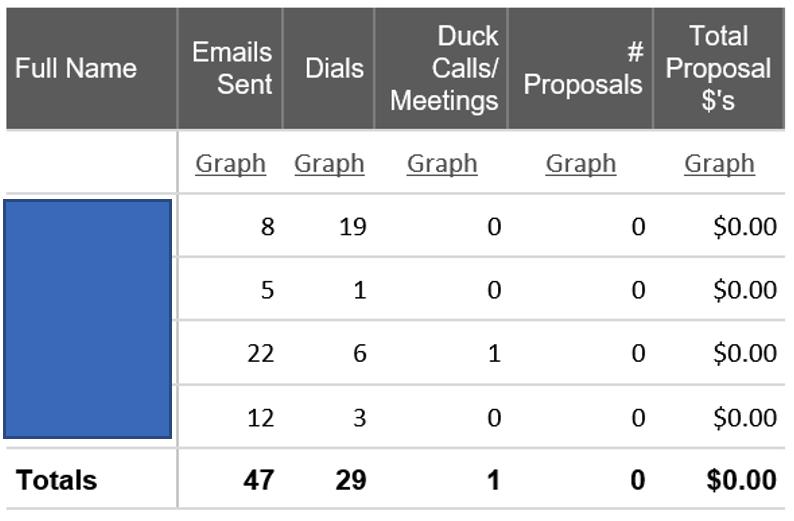
Important Sales Concepts
In this article, we'll be covering some of the most important sales concepts to keep in mind when you're out there selling, these are:
In our sales training classes, we spend a great deal of time on the appropriate "attitude" required to be successful in selling. With the right attitude, you can count on consistently executing the required conduct and sales techniques to be successful. I once heard another sales development expert explain that "sales technique is just a change in language. You already have a sales language; it just may not be as effective as it could be." (If you want additional information on "attitude", you can find more posts in our blogs.)
However, in this article, we'll be focusing on 5 important sales concepts. You can also call them "techniques" but sometimes problems occur when someone tries to duplicate the exact technique that a trainer uses. For example, if your facilitator is from the northeast part of a country where the communication style is a little more direct, faster-paced and some would describe as "aggressive", but you are a mid-westerner, then you may find yourself failing to bond well with prospects, not because of what you have said, but more because of how you said it. So, for that reason, we'll focus on the concepts and let you develop your technique.
However, with that in mind, don't let your "record collection" or "need for approval" get in the way of executing the concepts. (There I go again- back to attitude)

Sales Concept #1: Be Unique.
You have your elevator speech, your 15-second commercial, your value proposition, your positioning statement, etc. It doesn't matter what you call it. The concept is this: Have a concise way to describe to someone what you do when you first meet him or her.
Here's the problem. Everyone in selling has been taught the elevator speech, the 15-second commercial, the value proposition, and the positioning statement, etc. You know it's supposed to describe what you do:
- "I help companies like yours manage their insurance risk."
- "I sell customized clothing to busy executives."
- "I own a CPA and tax consulting practice specializing in the needs of companies that generate between 5 and 10 million dollars in revenue".
Sound familiar? That's the problem. There is nothing unique about the approach from any one of these statements. Here's the rule about the concept:
What you say should cause the person with whom you are talking to respond either verbally or mentally in one of three ways. You have to give the prospect a compelling reason to keep listening. When you deliver whatever it is, they should respond with either:
- "That's me".
- "How do you do that?"
- "Tell me more."
Examples:
- Insurance: "I provide people buckets of money in the right amount, at the right cost and at the right time." (How do you do that?)
- Banking: "My clients are companies that discovered that working with a bank should be more than just a place to get money or leave money." (Tell me more.)
- Accounting: "I'm in the business of helping small businesses that are sick and tired of sending the government more money and keeping less." (That's me!)
The idea is to think about what people or companies have chosen to do business with you or your company or why they buy the product and service that they have bought from you. What problem was it that they wanted to go away or solve? Or what benefit were they looking for that they weren't getting? Take that information and create your "unique sales approach" (usa).
The technique: Before you deliver your "usa", you may want to start by telling the person that you are talking to that it is easier to describe what you do by asking a couple of questions. "In a nut shell, what I do is...(deliver your usa)" and close by asking, "May I ask you a question?"

.jpg?width=5184&name=pexels-akil-mazumder-1072824%20(1).jpg)
Sales Concept #2: Start Strong.
The start of any undertaking is obviously the most important step.
"Every journey starts with the first step"
"If you want to run a marathon, you have to start with the first step"
"Putting yourself in a position to win means you have to start competing"
When it comes to building the confident and trusting relationship associated with a strong seller / buyer relationship, the start is especially true. I'm not just talking about the immediate "bonding and rapport" part of selling. That is important, but the "start" isn't a 5-minute segment of chitchat talking about the sailfish on the wall or the soccer pictures on the credenza. No, the start is the entire first contact process. It doesn't matter if it is a phone call or a meeting at a chamber meeting or the initial meeting after the phone call. It's the start that will often, if not always, determine your finish. In today's post, I focus on the initial face-to-face meeting with a suspect.
I want to describe this segment via the "HAVE-TOs"
-
You
have to be prepared (
pre-call strategy). Aside from your internet research, you have to prepare for the sales process. In other words, you have to know what questions you are going to ask that are going to move the sale forward, not just questions about the technical aspects of their current position or status. You have to anticipate the suspect's answer to those questions and then be prepared with your follow up dialog. Too many sales people take this step for granted because "they've been in the business for ... years." You have to be prepared for their questions and how you will respond to them. And finally, you have to be prepared for curve balls. Suspects / prospects always throw them, and when you are unprepared, you will always miss them or certainly never get a clean hit.
-
You
have to identify clearly what your preferred outcome is. In the book,
Getting to Yes, the authors do a great job of explaining how defining your preferred outcome helps guide you through any meeting that you have. In selling, and specifically for the initial call, most sales people define the objective of the first call as "to get a second call". I will change that and suggest that your objective be to make this the
only call. Try to disqualify your suspects instead of trying to qualify them. I guarantee you will end up with more qualified opportunities.
-
You
have to demonstrate your credibility, not by what you say, but by how you conduct yourself. Make yourself different (
see first blog in this series). You will do this by the questions you ask, by your focus on the prospect and what is important to them, and by your reluctance to get into a sales pitch and do a data dump in their lap. You demonstrate your knowledge of the industry by the stories, analogies and metaphors you use about their business. You demonstrate your professionalism by the way you ask professional penetrating questions and by how you don't look, act or sound like every other sales person that has met with this executive.
-
You
have to have the courage to ask the tough questions and have
fierce / honest discussions. Everyone reading this probably knows the questions that you are supposed to ask and how you are supposed to ask them and when you are supposed to ask them. Yet, every one of you most likely leaves initial calls having failed to ask the tough questions like, "How will you make this decision? When do I meet the decision maker? If you don't have a budget, then how will you pay for this? If you are shopping for low price, then what happens if I show up and I'm not the low price? Who wins a tie? When you told your current provider that you were unhappy with the current situation and you were shopping to replace them, what did they say?" And finally, "When I show up to make my presentation, I need for you to be in a position to tell me 'yes' or 'no', what objections do you have to that process?" You all know that you should ask those questions, but time and time again, you fail to. How come?
-
You have to leave your need for approval at the door when you leave the house in the morning. You have to re-write your record collection about how people buy in your industry. (Let your sales manager stew over that one.) You have to leave your personal buy cycle at the car lot where you debated for the last three weeks on which make and model to buy and where you negotiated with the manager for 2 hours.
-
You
have to qualify suspects/prospects to do business with you rather than you attempting to qualify to do business with them. Too many salespeople still go to a meeting feeling like they have to qualify to do business with someone. No, you don't. You have to make sure that the person you are meeting with qualifies to do business
with you. Not just from a profile perspective or from an underwriting or credit perspective. Also, qualifying is more than, "Did you do a needs analysis, discuss the features and benefits, get a budget, and agree to a decision-making process?" In our world, in our
effective selling system, it means the following:
-
Do they have a compelling reason to take action quickly?
-
Will they invest the time, money, and resources to solve a problem they have or the problem they see coming? Will they invest that time, that money, or those resources in a timely fashion, or are they in the "seeking" mode of buying?
-
Will they tell you "yes" or "no" when you present? In order to do this, you MUST have eliminated the current provider. You MUST have heard them say they want to "fix it", whatever "it" is. And you MUST have a solution that is appropriate for their problem. You cannot make the mistake that, even though your solution isn't exactly right, you are good enough to sell them on buying something that doesn't fit their exact specs.
-
You have to close. Not close the sale, but close this step and get a clear next step. There is always the next step even if you are in a "one appointment close" business. It doesn't matter if your business requires multiple meetings, or one and done. Always close what you came there to do and then move on. I promise you that, if you get masterful at this step, you will have fewer meetings and your close ratio will improve. Ask for closure, ask for a clear next step, ask for the business.

Sales Concept #3: Identify Objections.
If you've been in sales training with any reputable training company, at some time you will have the motivation the prospect has to take action, the commitment for a budget of time, money, and/or resources to make the problem go away, or to make their dream realized.
The normal process now is to agree to make a presentation, answer their questions, and at that time overcome any objections they may have.
Dealing with objections is really important, but dealing with them for the first time at presentation is Wrong!
The time to eliminate the objections and stalls and to be completely prepared to answer questions is right now! It is absolutely critical that you find out in advance of your presentation what the objections and stalls will be to making a decision.
This is not a complicated step but it may be difficult if your own buying cycle or record collection does not support the execution of the step. Here are the steps to executing this step and making sure you improve your probability of closing the business once you present.
- Review the motivation to take action and the budget items
- If you haven't already done so, make sure that the prospect has committed to fixing the problem and to finding a provider for the solution.
- Transition into the "pre-close step"- It may sound something like, "I hate to assume things so I'd like to get clarity on our next step. Can I share with you the process that seems to be mutually acceptable to most people I work with?"
- Commitment dialog- "I'll be prepared to come back and present a proposal. The proposal will meet your expectations in every aspect in terms of objectives and features and benefits. I'll present a solution within the budget parameters discussed. And I will be prepared to answer all of your questions. If I can't deliver on these three items, then I won't need to make a presentation. When I finish my presentation, I'll need for you to be in a position to do one of two things. Can I share that with you?" (Assume "yes") "One thing you could do is tell me 'yes,let's do business.' The second thing you can do is tell me 'no, let's not do business.' Either one is ok. I would prefer that you tell me yes, but no is ok."
- Identify objections - "What objections do you have to this process?"
This process will not eliminate objections; it will move them up in your sales cycle. This, in turn, allows you to separate the contenders from the pretenders and present only to those that truly qualify to do business with you.

Sales Concept #4: Follow Up.
You've prepared. You had a great start to the relationship by conducting an amazing first client-facing appointment. Now what? "Now" is where the weak link normally occurs in every sales organization's execution of an effective sales process.
"Now" is the follow-up after the appointment and the preparation for the next step.
Assuming that the next step is to present a proposal that meets the client's needs, it's within their budget and you'll be in a position to answer all of their questions once you present. Having stated that, your follow-up should be a memo or documented communication of some sort that should review what has been discussed and what is expected at the next step. The next step in our example is "presenting a solution". Sandra Usleman of USI - Austin calls this step the "as we agreed to" letter.
The "as we agreed to" letter would look like and read something like the following:
- Opening, greeting
- Review previous meeting discussions
- "Agreed to" points
- The problem or desired outcome
- The budget of time, money or resources needed to solve the problem or arrive at the desire outcome
- The decision process
- Next step - getting a decision to move forward or stop
- Follow-up phone call to confirm the contents of the letter
As simple as this may sound, it can have a significant impact on your ability to close more business. The challenge isn't in completing this step; the challenge is making sure that you cover the critical points in an effective selling system as outlined above.

Sales Concept #5: Get a Decision.
Every salesperson worth their salt will need to be able to close, of course.
Every salesperson has been taught to 'Ask For the Business', 'Always Be Closing', 'Get The Sale'. The problem with these exhortations is that salespeople translate them into 'get a yes'. Which is different than getting a decision.
Salespeople struggle in getting decisions because they are afraid to hear 'no' or their sales leadership has not given them permission to get a 'no'. If you don't get a 'yes, then typically the next alternative is 'think it over' or any one of its relatives:
- Showing it to someone
- Getting additional proposals
- Going to committee
- Have to look at the numbers
- Haven't met with my current provider yet
All of these are rotten alternatives to a no. You lose sleep. You make unreturned phone calls. You get more delays. You lose confidence. You lie to your manager telling them that you 'think' you're in good shape, should close now any day, they liked us, they loved the proposal, it just has to...
Makes you sick just thinking about it, doesn't it?
So, here is the 5th of 5- Get a decision. Prior to making your presentation, you have to make your pitch as to what happens next. It sounds something like this:
Let me review to make sure I understand what we need to do next. First, you want me to come back and provide you with a solution to all of these problems we've discussed today that are costing you lots of heartburn and money. Next, you want me to provide you with a solution within the guidelines we established relative to your investment of time, money, and resources. And the third item is an assumption. I assume you want me to be able to answer all of your questions at that time. Does that sound about right?
Good. I need for you to be in a position to tell me one of two things, either one is ok. Can I share that with you?
Good. When I come back and fulfill my part, I need for you to tell me 'yes, this makes all the sense in the world, let's do business' or tell me 'no, we aren't doing business. I would rather hear yes, but no is ok. What objections do you have to that process?
This WILL NOT eliminate objections. It will just move them up in your process and give you the chance to deal with them prior to presenting instead of afterward. You deal with them now and you either eliminate them as a qualified prospect and don't present or you present to a qualified prospect and get an answer.









.jpg?width=5184&name=pexels-akil-mazumder-1072824%20(1).jpg)





